Added 2 new A* pages:Did you know that one of the largest known craters in the Solar System is on our ol' Moon?
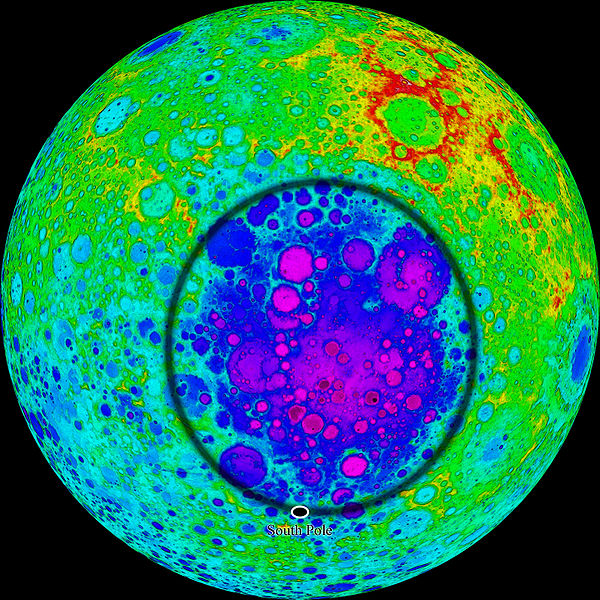
image from JAXA, modified by Ittiz (source)
(Interestingly enough, the data for that topographical image came from the Japanese probe Kaguya, which was originally named SELENE (Selenological and Engineering Explorer), after of course the Greek moon goddess, who also lent her name to a certain A* character.)
The South Pole-Aitken basin is about 2500 km in diameter, 3-6 km deep, and stretches from the Moon's south pole up across the far side of the moon--that part we never see because only one side of the Moon ever faces Earth. The crater's existence had been suspected for a while--from that tantalizing view of its edge across the south pole--but it wasn't confirmed until lunar probes started sending back views of the Moon's hidden side in the mid 60's.
The far side is actually quite different from the side we see; while nearly a third of the Earth-facing side is covered with flat basaltic plains from ancient lava flows, less than three percent of the far side has those nice smooth maria covering it, so it looks a lot more cratery:
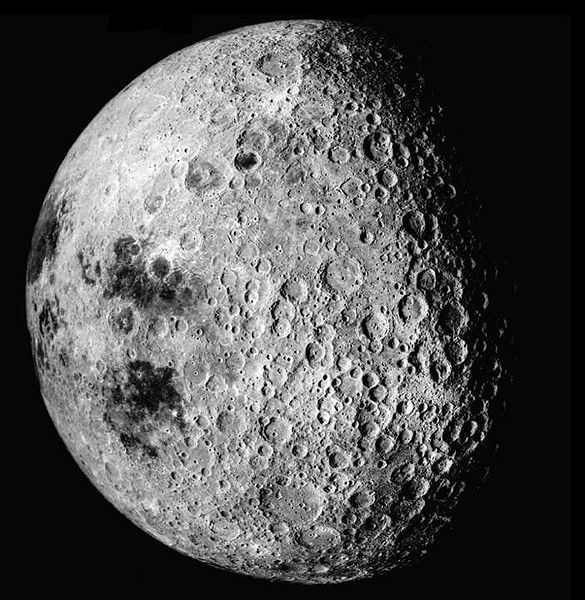
image by NASA (source)
Only the Hellas Basin on Mars is known to be larger (smaller in width at 2300 km in diameter, but 3 km deeper), although it is thought that the northern 40% of Mars, the North Polar Basin or "Borealis Basin," which is lower than the rest of the Martian surface, may in fact be a much, much larger crater, caused by an impact with a body up to 2700 km in diameter (which would have been bigger than Pluto!). You can see that here; Hellas is the dark blue spot in the lower right:
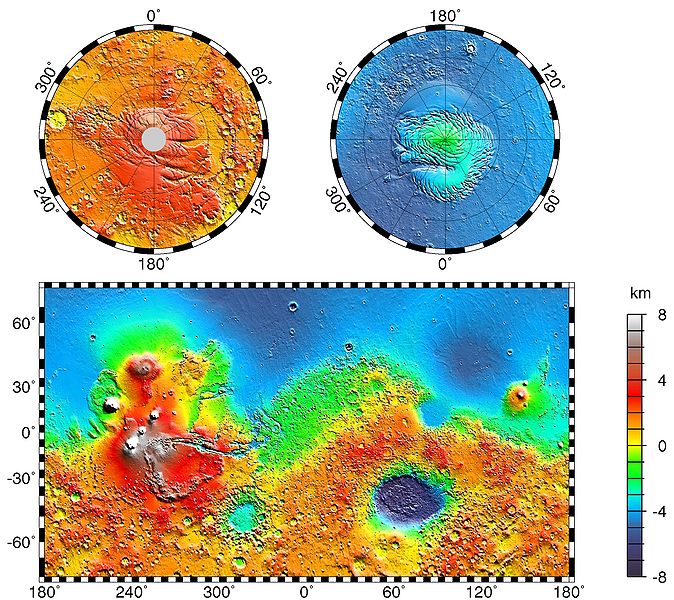
image by NASA (source)
But back to our Moon's big crater, an illumination map compiled from readings by the Lunar Reconnaissance Orbiter was released recently by ASU, showing how much light the various areas down at the Moon's south pole get:
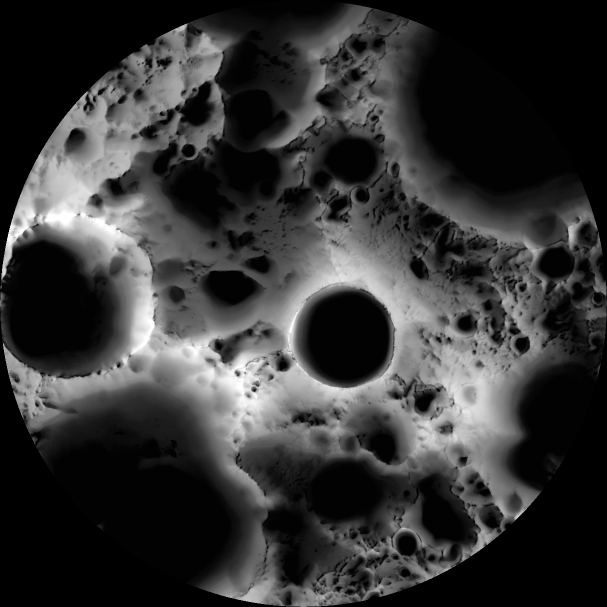
image by NASA/ASU (source)
They also have a nice conventional composite view of the pole, and you can see where that LCROSS experiment looking for water hit recently--they sent it into a perpetually shaded region, because water ice would have been most likely to survive in the shade:
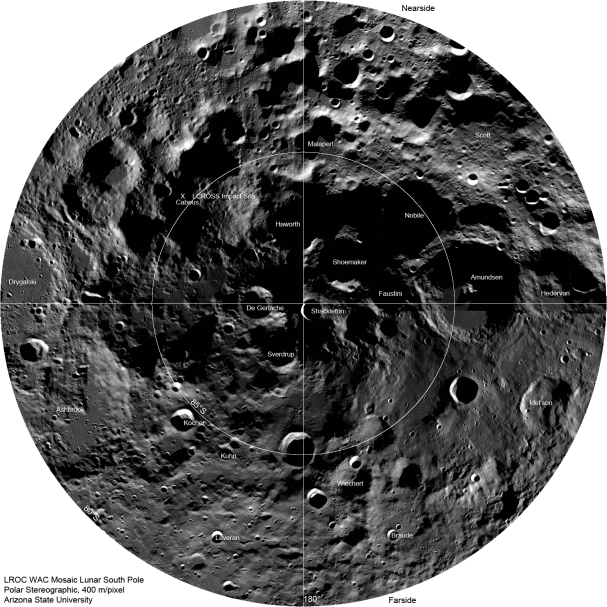
image by NASA/ASU (source)
The Clementine probe was the source of a nice earlier mosiac of the pole in the mid '90s:
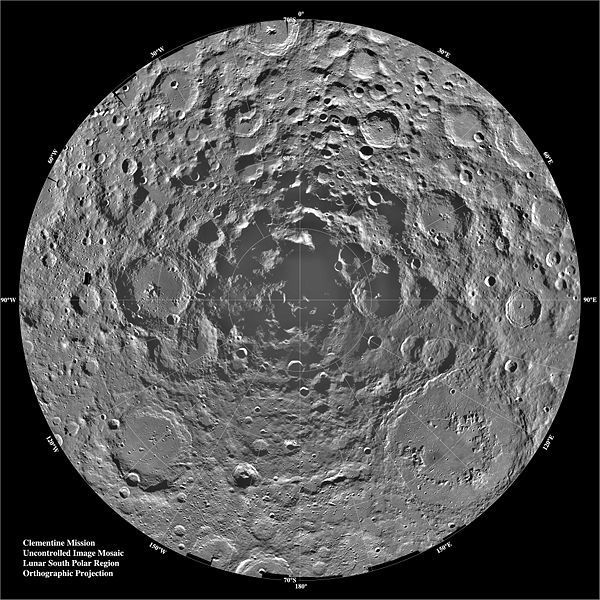
image by NASA (source)
That probe's name came from the old song "Oh My Darling, Clementine," because after its Moon orbits, it was to go investigate the near-Earth asteroid 1620 Geographos--which at the time of the mission, in 1994, was at its closest approach to Earth in two centuries, and the closest it will get until 2586: 5 million kilometers (curiously expressed on the Wikipedia page as "5.0 Gm"--that's gigameters, a unit equal to a billion meters)--so the probe would fly by the asteroid and then, out of fuel, continue drifting off into space, becoming "lost and gone forever" like the lyric of the song.
Geographos, incidentally, is thought to be the most elongated body in the solar system, measuring an estimated 5.1x1.8 km--that's the best measurement achieved from Earth by radar telescopes in the Deep Space Network, because Clementine didn't make it to the asteroid: while looping back to Earth for the transfer to its course to the asteriod, a malfunction fired one of its maneuvering thrusters for 11 minutes, using up the probe's fuel and leaving it in an 80 rpm spin! So it was left in an Earth orbit, passing through the radiation belts, and was last heard from a month later before it lost power.
Poor Clementine! I came across her because I was looking for a model for a satellite I had to draw for the current "Death Boy" storyline in my other daily comic, "Sketchy"
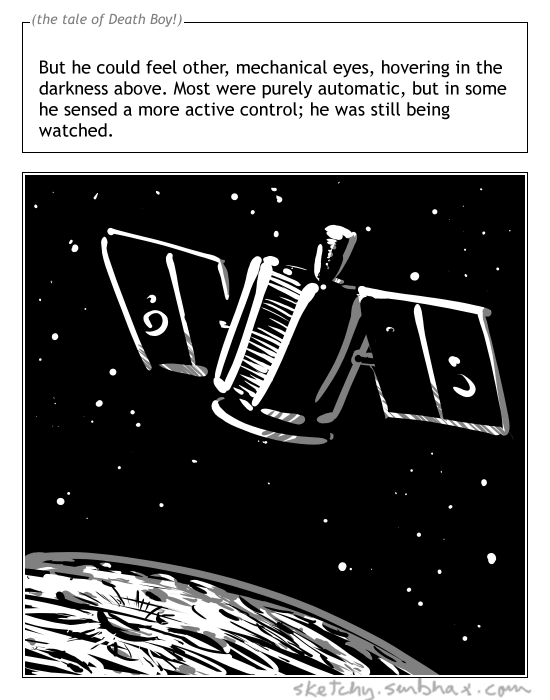
much of which has taken place on the Moon! You can jump to that bit here.
And one last nifty thing I found out about lunar geology (hm well aside from the constant electrostatic levitation of Moon dust by the solar wind) is that its crust is likely to be honeycombed with ancient lava tubes, from back when it was newly formed and all hot and volcanic. That's suspected because we can see holes that sure look like entrances into lava tubes from lunar probe photography, like this one taken by the LRO in the Mare Tranquillitatis pit crater and released this past September:
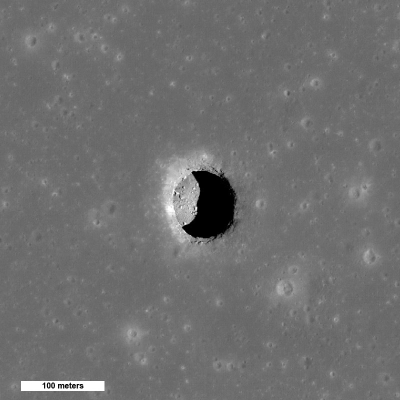
image by NASA/ASU (source)
That little baby's estimated to be about 100 meters deep! Man, we need to drop a probe down there.
|
